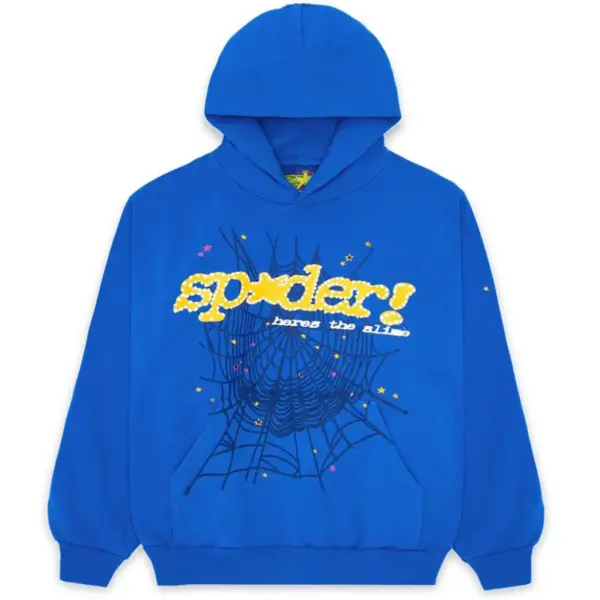Introduction to Trapstar
Trapstar is an iconic streetwear brand that has steadily risen to prominence, blending the worlds of urban fashion and music culture. Launched in 2005, Trapstar started as a small yet bold venture into the ever-evolving world of street fashion, quickly garnering attention for its unique designs and gritty aesthetics. Rooted in London, the brand has expanded globally, creating a lasting influence in streetwear communities and beyond. Over the years, Trapstar has built a reputation not just for its clothing, but for its association with hip-hop culture, celebrities, and influencers, shaping a global movement of its own.
The Origins of Trapstar
Trapstar was founded by three friends – Mikey, Lee, and Will – who shared a passion for fashion, music, and the streets of London. The idea for the brand came from their desire to combine these passions into something authentic. The name “Trapstar” itself is a nod to the world of street culture and the hustle mentality often associated with urban life, particularly within the music scene. In the beginning, the trio focused on creating limited-edition T-shirts, which quickly caught the attention of their peers. They blended the raw, unpolished nature of street art with graphic designs that resonated with the struggles and triumphs of everyday life, especially for young people in the city.
The brand’s early success was primarily driven by word of mouth and its strong ties to the music industry. With London being a hub for grime and hip-hop music, Trapstar quickly became a staple in the wardrobes of musicians, artists, and influencers who were looking for a brand that represented their lives and culture.
Trapstar’s Cultural Impact
What sets Trapstar apart from many other streetwear brands is its deep connection to the culture it represents. The brand isn’t just about fashion; it’s about telling a story, a narrative that resonates with the realities of life in urban environments. Trapstar’s designs often feature bold logos, striking typography, and images that speak to the rebellious, independent spirit of its wearers. This makes the brand more than just clothing – it’s a statement.
Trapstar has made significant strides in representing the voices of youth culture, particularly in the urban and music scenes. By collaborating with artists, musicians, and athletes, the brand has cemented itself as a key player in the world of streetwear. Over the years, Trapstar has worked with some of the biggest names in hip-hop, grime, and rap, including the likes of Rihanna, Jay-Z, and the British rapper Stormzy, further solidifying its place in the global cultural landscape.
The Evolution of Trapstar’s Aesthetic
Initially, Trapstar’s designs were simple yet impactful, featuring graphic prints and logos that reflected the gritty and raw elements of the street culture it was inspired by. As the brand grew, its aesthetic became more refined, with intricate details and high-quality materials incorporated into its collections. However, at its core, Trapstar has maintained its commitment to authenticity and urban style.
Trapstar’s clothing ranges from oversized hoodies and sweatshirts to graphic tees, bomber jackets, and tracksuits. The brand has also expanded into accessories, such as hats, bags, and scarves, all designed with the same bold, street-inspired aesthetic. Each collection reflects the ever-changing nature of urban fashion, balancing timeless style with a fresh, contemporary edge.
Trapstar’s use of high-quality fabrics and attention to detail in craftsmanship has helped elevate the brand beyond just another streetwear label. The brand’s commitment to premium quality ensures that the clothing not only looks good but also lasts, making it a valuable addition to anyone’s wardrobe.
Celebrity Collaborations and Influence
Trapstar’s rise to fame was closely linked to its collaborations with high-profile celebrities and musicians. These partnerships helped propel the brand into the global spotlight and created a loyal following of fans and supporters. Trapstar collaboration with rapper Jay-Z, for example, saw the brand’s designs featured in the music video for “On to the Next One,” making Trapstar a recognized name in the hip-hop community. Likewise, Rihanna, who has been seen wearing Trapstar pieces, further amplified the brand’s appeal in mainstream fashion.
In addition to celebrity endorsements, Trapstar’s association with British grime artists played a major role in the brand’s success. The connection with artists like Stormzy, Wiley, and Skepta solidified Trapstar as a brand that wasn’t just for fashionistas, but for those immersed in the sounds and lifestyle of grime music. The crossover between Trapstar’s clothing and the music scene gave the brand an authenticity that many other streetwear labels lacked.
Trapstar’s Global Reach
While Trapstar started in the UK, the brand’s influence quickly spread worldwide. Thanks to its celebrity endorsements, strong social media presence, and international collaborations, Trapstar now enjoys a loyal following across the globe. From London to Los Angeles and Tokyo, the brand has gained recognition in major cities around the world, and its pieces can be seen on the backs of celebrities, athletes, and fashion-forward individuals.
The brand’s presence in the United States, in particular, has been significant, with Trapstar gaining popularity among hip-hop artists and influencers who are drawn to its unique style and urban roots. Trapstar’s expansion into international markets has allowed the brand to tap into new audiences while staying true to its British origins. The global reach of Trapstar is a testament to the power of streetwear and its ability to transcend borders and cultures.
The Future of Trapstar
Looking ahead, Trapstar’s future appears bright as the brand continues to expand its reach and solidify its place in the global streetwear industry. As the demand for unique, authentic fashion continues to grow, Trapstar is well-positioned to maintain its status as one of the most influential brands in the streetwear space.
The rise of sustainability and ethical fashion in the industry could present an opportunity for Trapstar to adapt its practices to meet the growing demand for environmentally conscious clothing. Given its strong cultural influence, the brand’s commitment to sustainability could further enhance its reputation and continue to attract a younger, more socially conscious audience.
In conclusion, Trapstar’s journey from a small, underground brand to a global powerhouse is a testament to the power of authenticity, culture, and creativity in fashion. By staying true to its roots while evolving with the times, Trapstar has carved out a unique space in the world of streetwear, with a legacy that will likely continue to inspire future generations.




